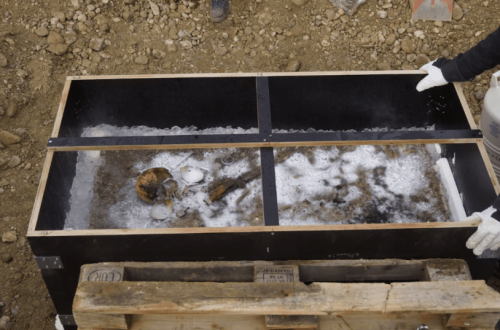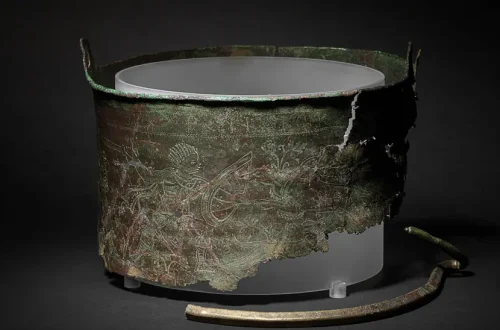Amateur archaeologists have made an exciting discovery at Vindolanda, a Roman fort site just south of Hadrian’s Wall in Northumberland, England. Jim and Dilys Quinlan, unearthed a stone relief depicting the winged goddess of victory, Victoria, during a volunteer excavation. The find offers a glimpse into Roman religious practices and the cultural life of soldiers stationed at this frontier outpost nearly 2,000 years ago.
Vindolanda, established in the late 1st century AD, was a key military base along Hadrian’s Wall, a defensive structure built by Emperor Hadrian in 122 AD to mark the northern boundary of Roman Britain. The site has long been a treasure trove for archaeologists, yielding artefacts like the famous Vindolanda tablets—wooden writing tablets that preserve letters and records of daily life. The newly discovered the relief during a two-week dig adds to this rich history. Jim Quinlan described the moment of discovery: “There is that sense of palpable excitement when you turn over the 2,000th piece of Roman rubble and see the face of a goddess staring back at you.” The couple, who have volunteered at Vindolanda for 15 years, spotted the carving while clearing debris from a section of the fort.

The stone relief depicts Nike or Victoria, a deity often associated with triumph in Roman culture, symbolising victory in battle and athletic contests. In this depiction, she is shown with wings, a common feature in Roman art and is likely linked to the military context of Vindolanda, where soldiers would have sought divine favour for success in their campaigns. The relief’s detailed craftsmanship suggests it was a significant piece, possibly displayed in a public or sacred space within the fort. Archaeologists believe it dates to the 2nd or 3rd century AD, when Vindolanda was a bustling hub for Roman troops and their families.
The discovery highlights the value of amateur involvement in archaeology. The Quinlans, both retired and passionate about history, joined the excavation as part of a volunteer programme run by the Vindolanda Trust, which manages the site. These programmes allow enthusiasts to work alongside professionals, contributing to the preservation and understanding of Roman Britain. The find also underscores the ongoing potential of Vindolanda, where discoveries continue to emerge despite decades of exploration. The site’s anaerobic soil conditions have preserved organic materials like leather and wood, making it a unique window into the past.

Volunteers Jim and Dilys Quinlan discovered the stone relief of the Roman goddess Victory. Credit: The Vindolanda Trust
Experts are now studying the relief to learn more about its origins and purpose. Initial assessments suggest it may have been part of a larger monument or shrine within the fort. The Vindolanda Trust plans to display the artefact in its on-site museum, where it will join other notable finds like the tablets and a child’s shoe, offering visitors a tangible connection to Roman life. The discovery has generated excitement among historians and the public, with social media posts reflecting widespread enthusiasm for the find.





